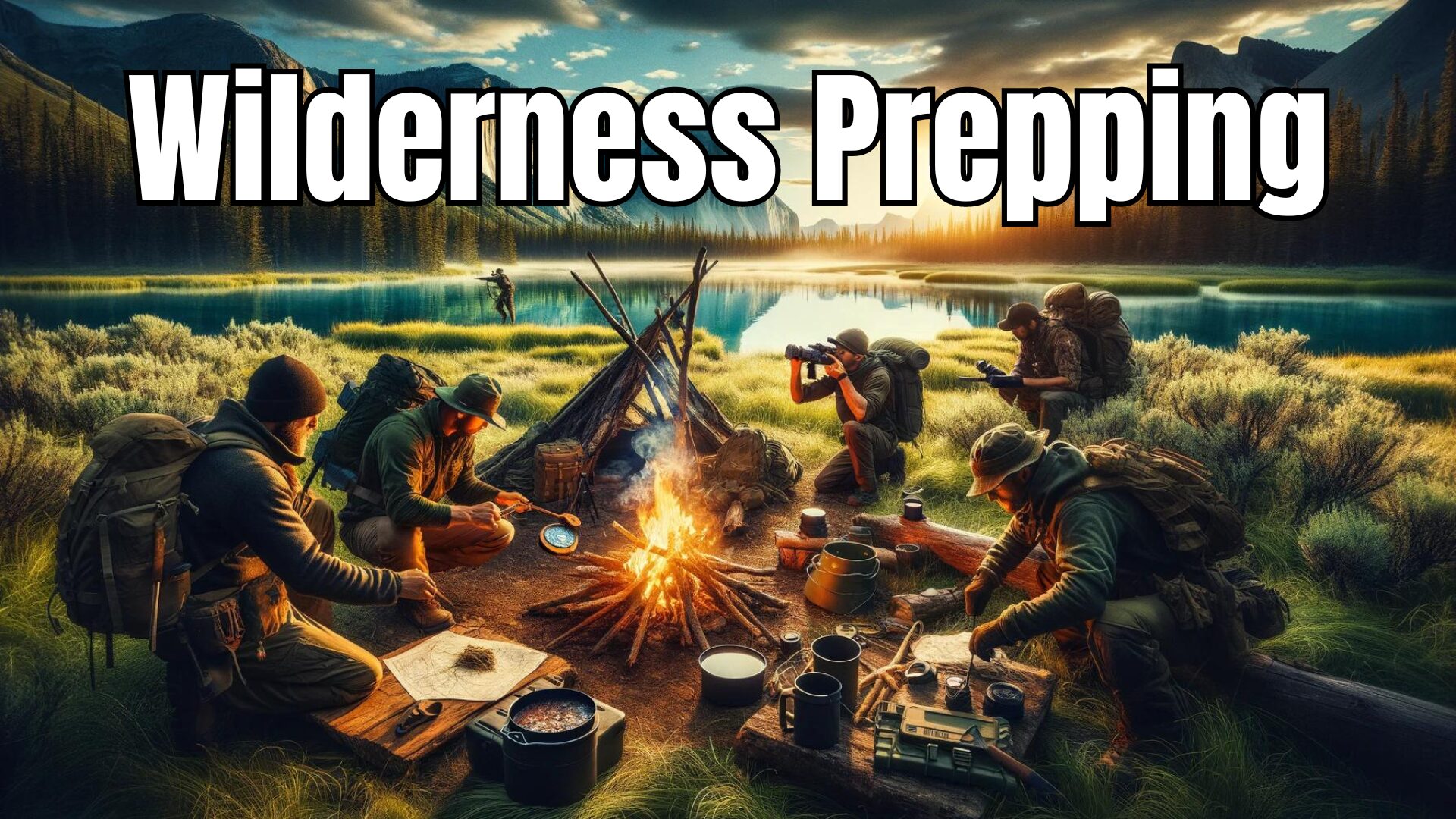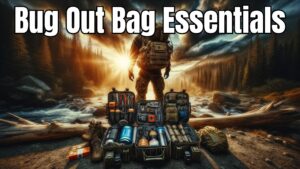Venturing into the wilderness requires not just courage but a robust set of skills to navigate the unpredictable.
Whether you’re facing a serene forest or the untamed backcountry, the ability to find water, build shelter, and signal for help can mean the difference between a life-rich adventure and a survival scenario.
Table of Contents
Essential Wilderness Survival Skills for Preppers
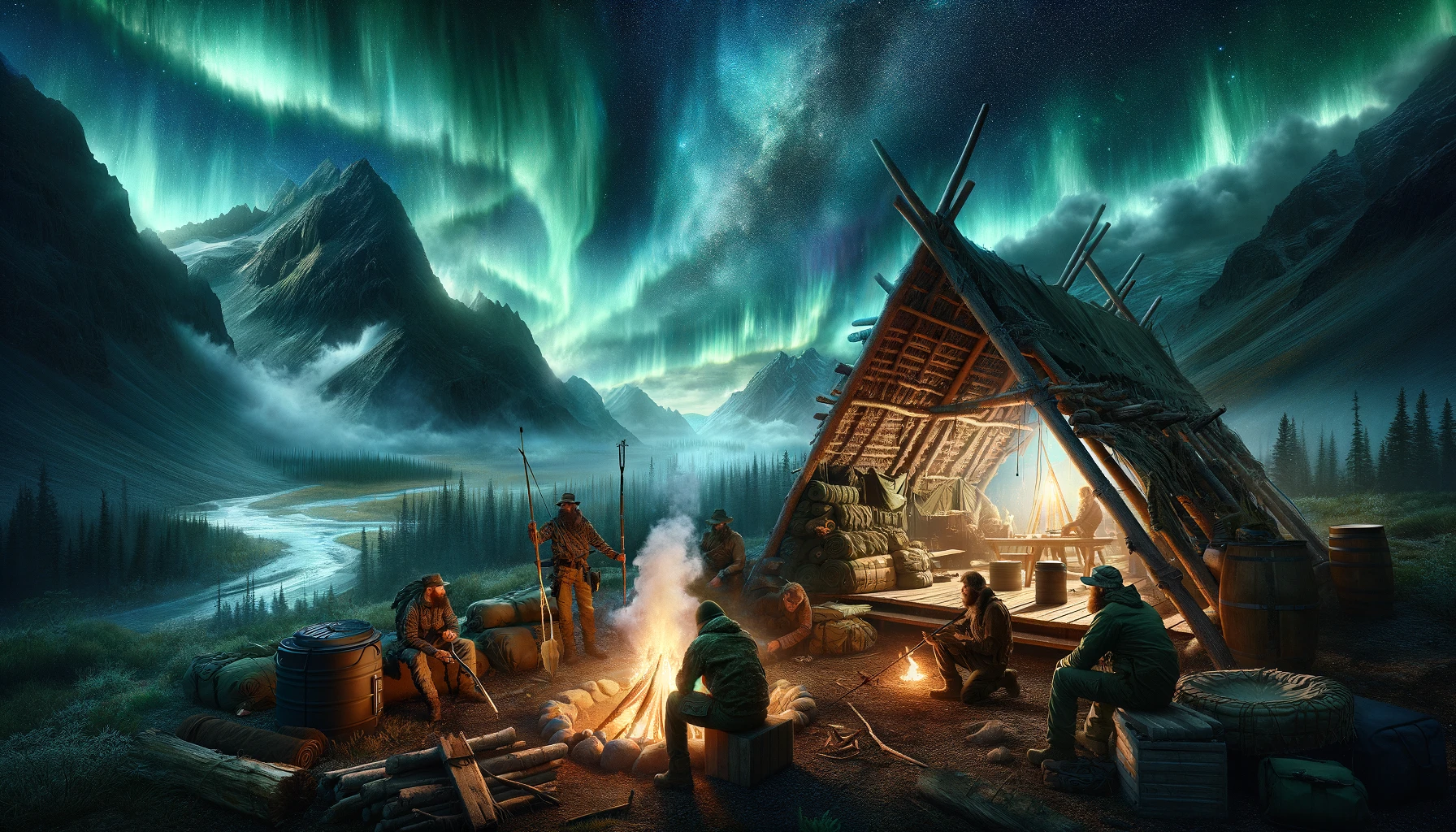
Mastering Backcountry Preparedness: Navigation and Shelter Building
When venturing into the wilderness, wilderness survival skills are essential for preppers.
Being prepared and equipped with the necessary knowledge and tools can make all the difference in a survival situation.
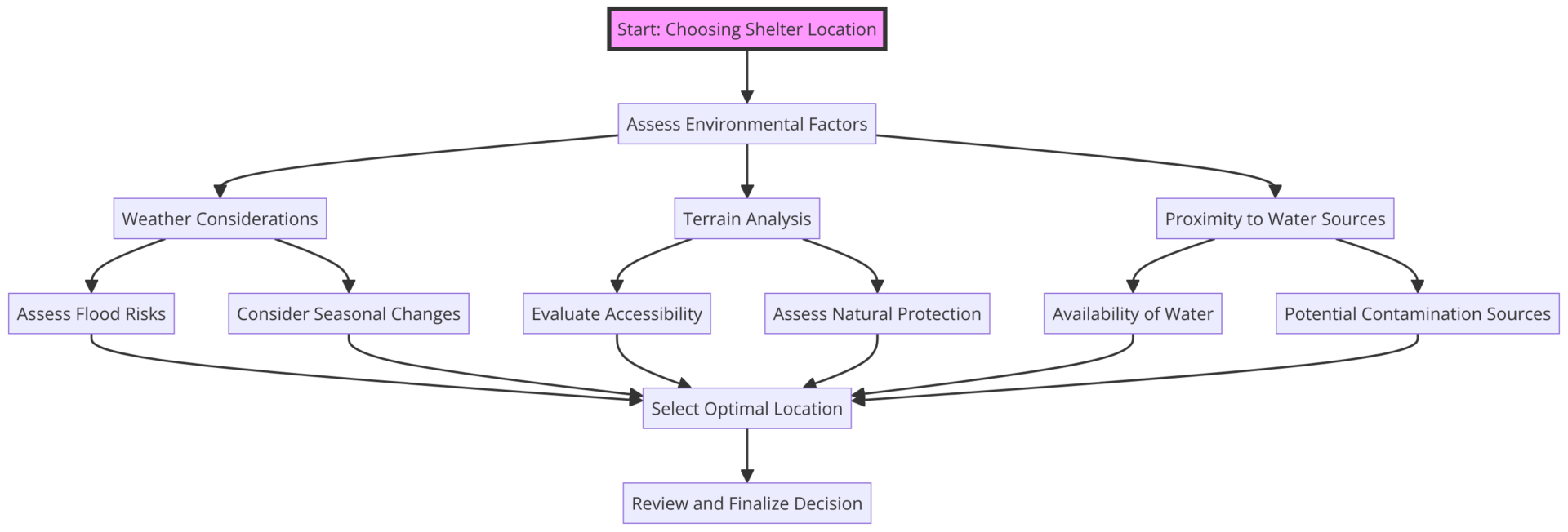
One of the most important aspects of wilderness survival is preparedness.
Understanding backcountry navigation and shelter building can help ensure your safety and survival.
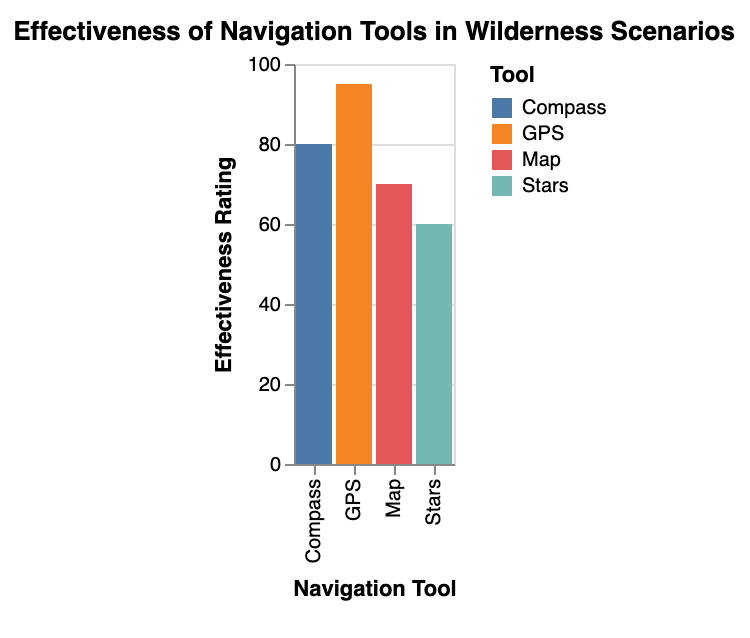
Water Purification
When it comes to surviving in the wilderness, water and food are vital.
In a survival situation, having the knowledge and skills to procure these resources is of utmost importance for preppers.
Water purification is essential to prevent dehydration and the risk of waterborne illnesses.
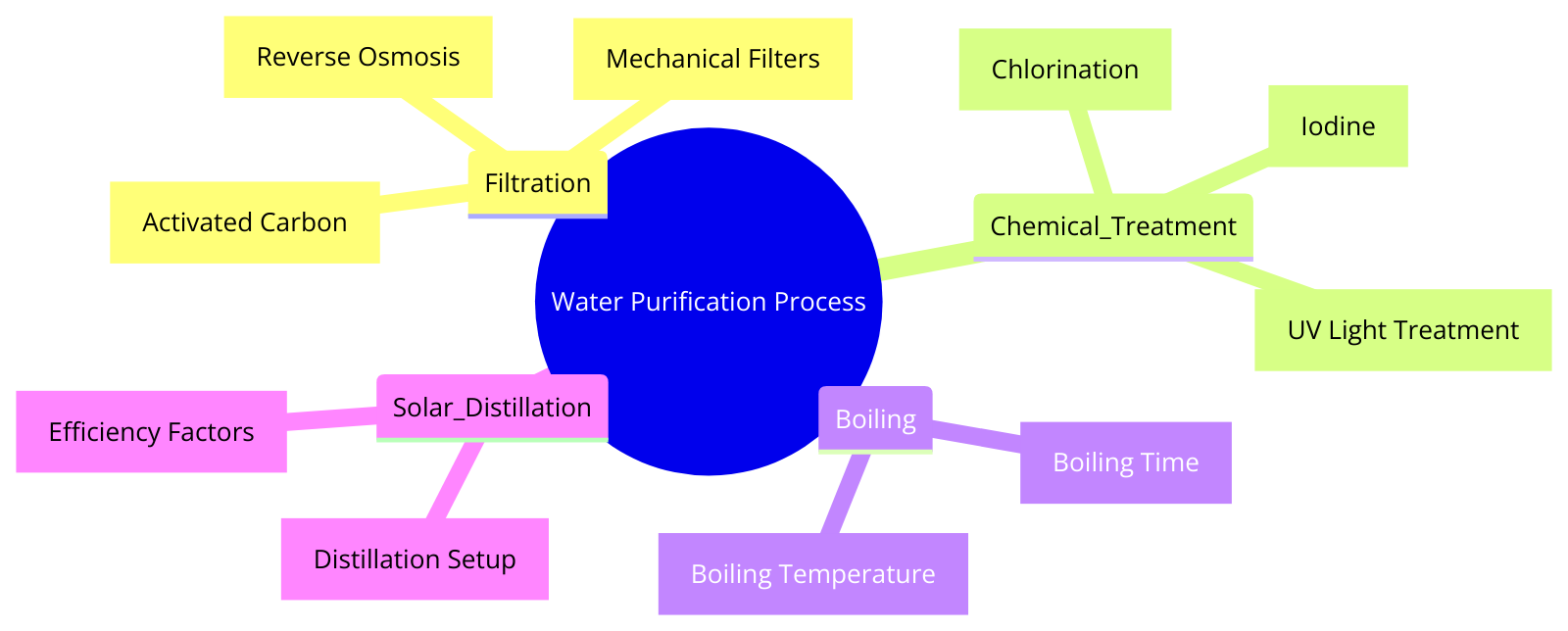
“Clean water is not just a resource; it’s your lifeline in the wilderness. Treat it with the respect it demands,”
H2O Fields, a hydrologist specializing in wilderness survival
Preppers should carry water purification tablets or a portable filter in their survival kit.
Food Procurement
Food procurement in the wilderness can be challenging, but with the right skills, it is possible to sustain yourself.
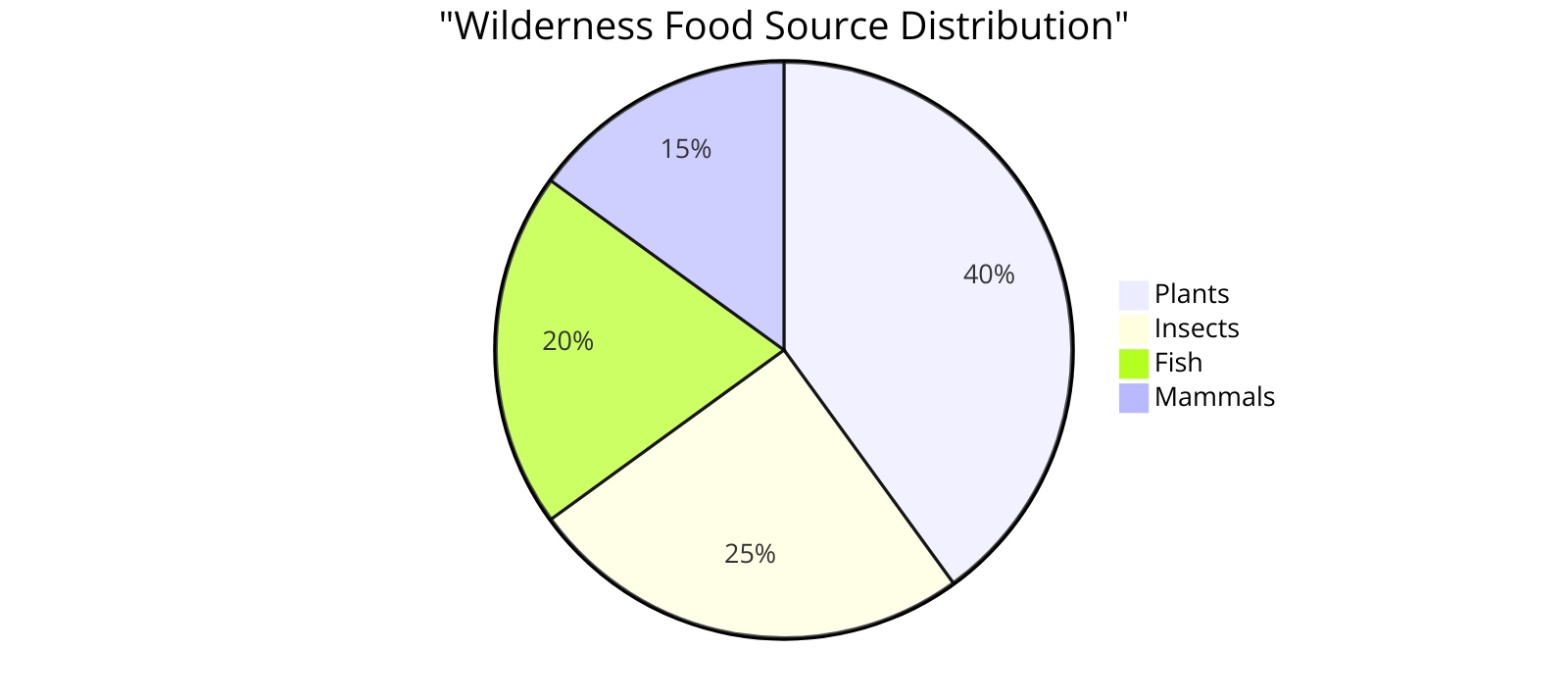
Learning basic bushcraft skills such as identifying edible plants, setting traps, and fishing can significantly increase your chances of finding food.
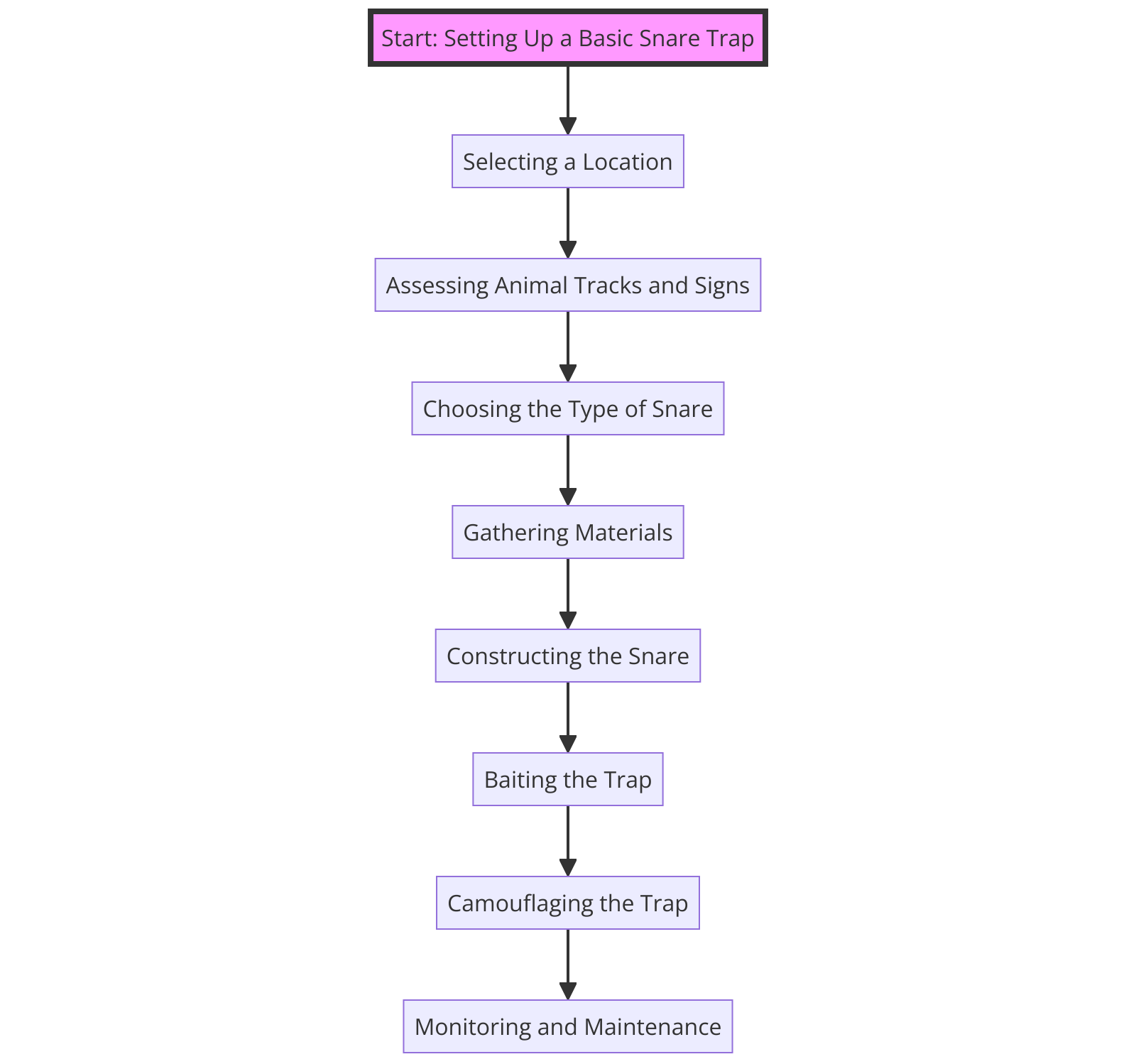
Understanding the wilderness environment, seasons, and local wildlife can help you identify food sources and avoid potentially harmful plants or animals.
Preparing Your Wilderness Survival Kit: Must-Have Items
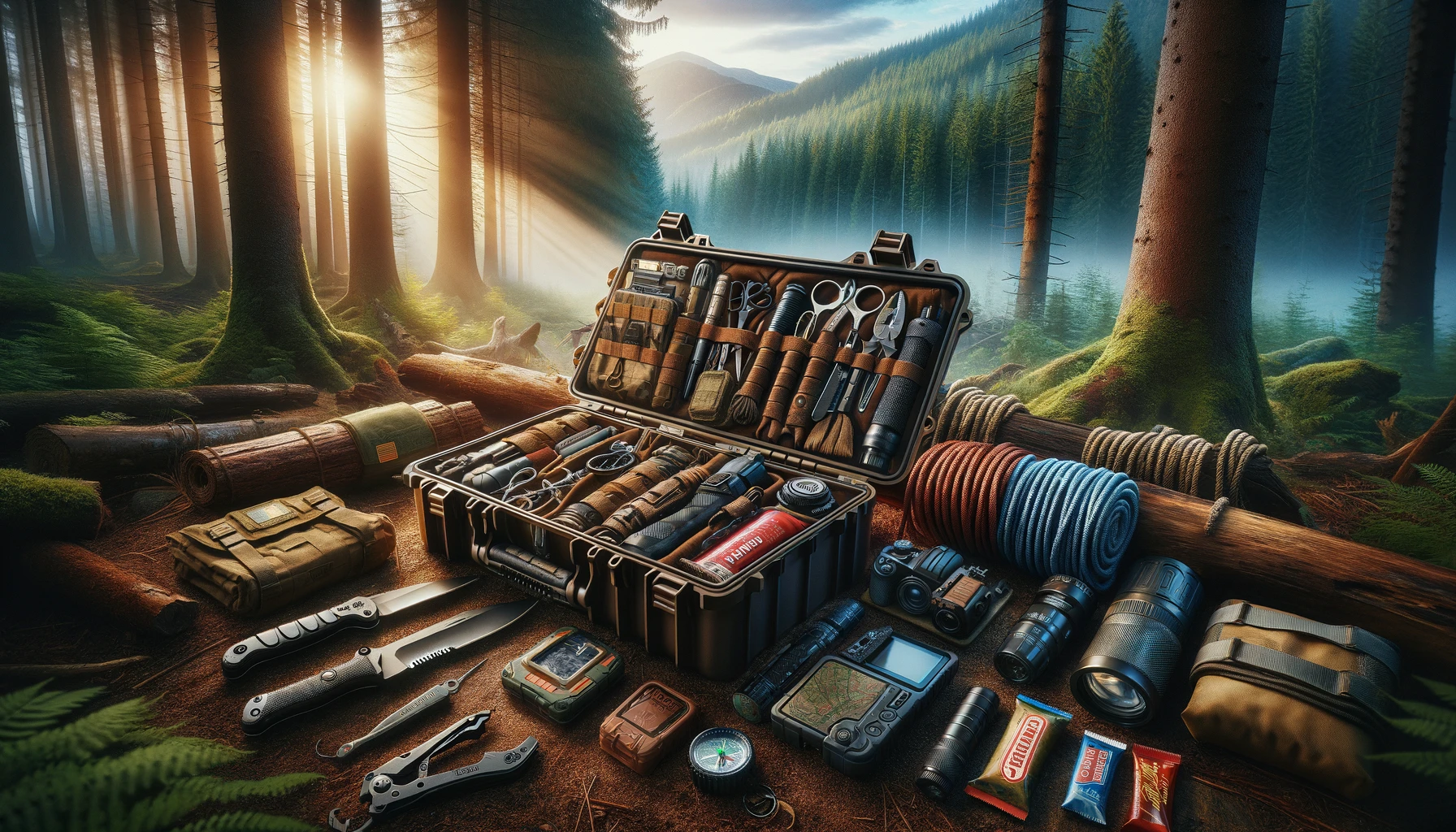
1. Fire Starters and Shelter Materials
When it comes to emergency preparedness, having the right tools in your wilderness survival kit can make all the difference in an emergency situation.
Besides survival training and basic survival skills, you’ll want to include fire starters like a flint or waterproof matches.
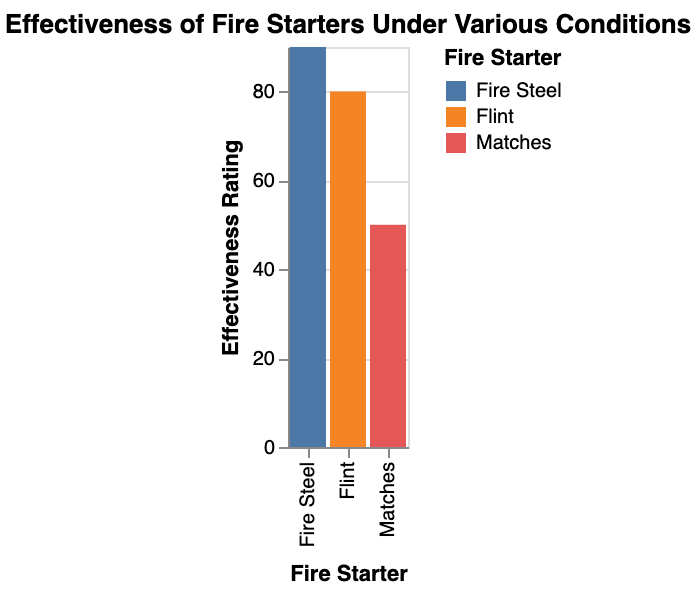
These will prove invaluable in lighting a fire for warmth and protection, particularly during natural disasters or in the wilderness.
Additionally, pack lightweight, compact shelter materials such as a tarp or emergency space blanket that can provide insulation and protection against the elements.
| Shelter Material | Weight (oz) | Packed Size (inches) | Thermal Properties |
|---|---|---|---|
| Tarp | 12 oz | 8″ x 4″ | Provides basic protection |
| Emergency Blanket | 2 oz | 3″ x 2″ | Reflects body heat |
| Bivvy | 6 oz | 6″ x 3″ | Insulated, retains heat |
2. Water Filtration and Food Procurement Tools
In the event of being lost in the wilderness or deserts, finding a reliable source of clean water is vital.
Pack a portable water filter or treatment tablets to purify water and ensure your hydration in remote areas.
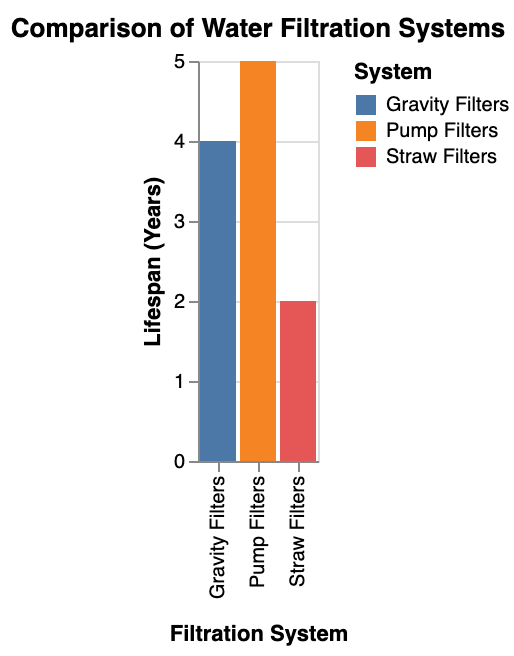
As for food procurement, consider stocking up on lightweight yet nutrient-dense options like dried fruits, nuts, and energy bars.
Learning primitive methods of hunting, fishing, or foraging can also be advantageous if you’re interested in wilderness survival.
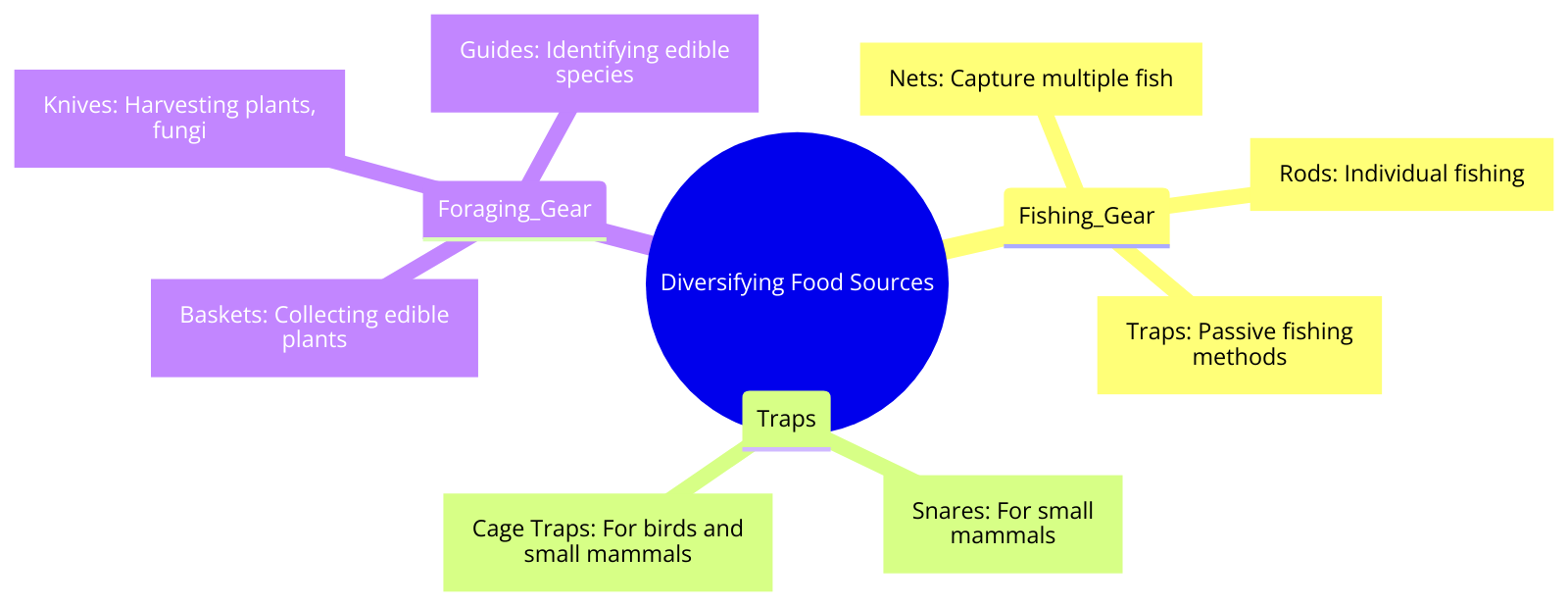
Mastering Backcountry Preparedness: Navigation and Shelter Building
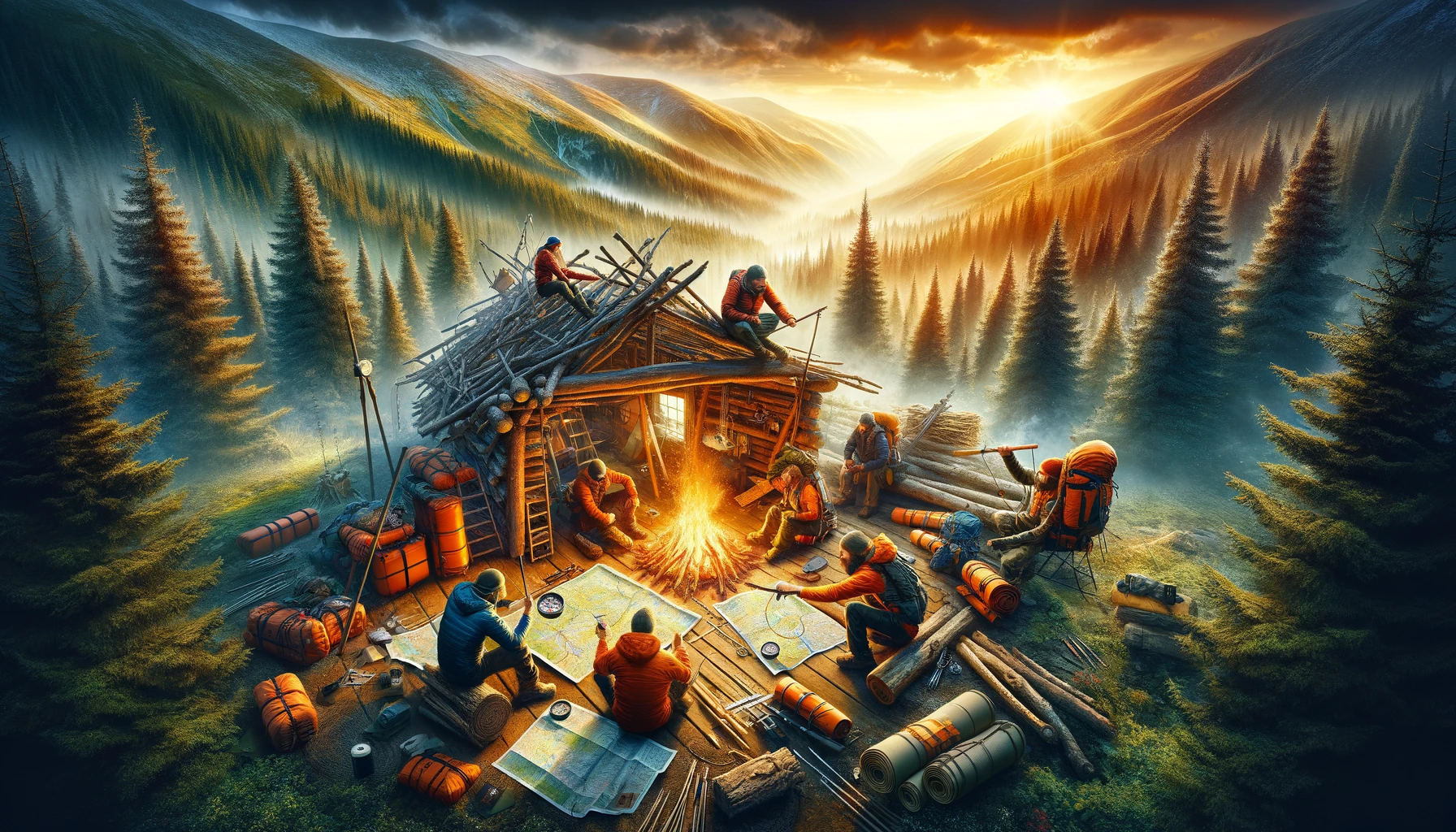
Navigation Skills
When venturing into the wilderness, it is crucial to possess basic and necessary physical skills for survival.
One of these skills is navigation, which can be accomplished using various methods.
An essential skill is knowing how to use a compass properly; this will help you find your way back to safety.
“Navigation in the wilderness is an art and science. Mastering it brings not just safety, but a deeper connection to the land,”
Sheila O’neil, a navigation instructor
Shelter Building for Survival
Building a shelter is another critical skill to have when stranded in the wilderness.
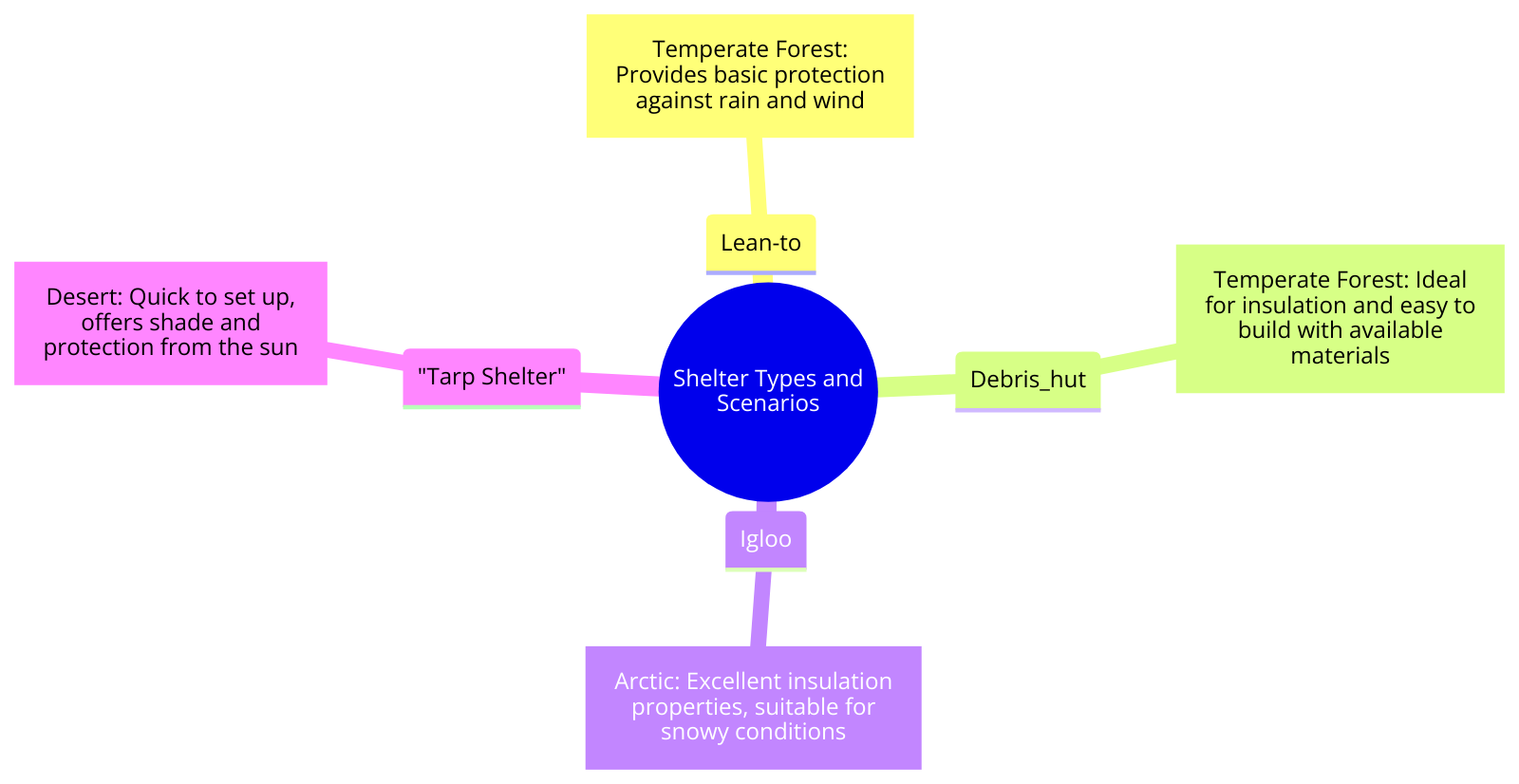
During a survival situation, you may need to live off the land and build a primitive shelter to protect yourself from harsh weather conditions.
| Natural Material | Insulation Properties | Waterproofing Capabilities | Availability |
|---|---|---|---|
| Leaves | Good | Poor | Abundant |
| Branches | Fair | Fair | Abundant |
| Snow | Excellent | Excellent | Seasonal |
Knowing how to identify and utilize available resources is vital.
Water Purification and Food Procurement in the Wilderness
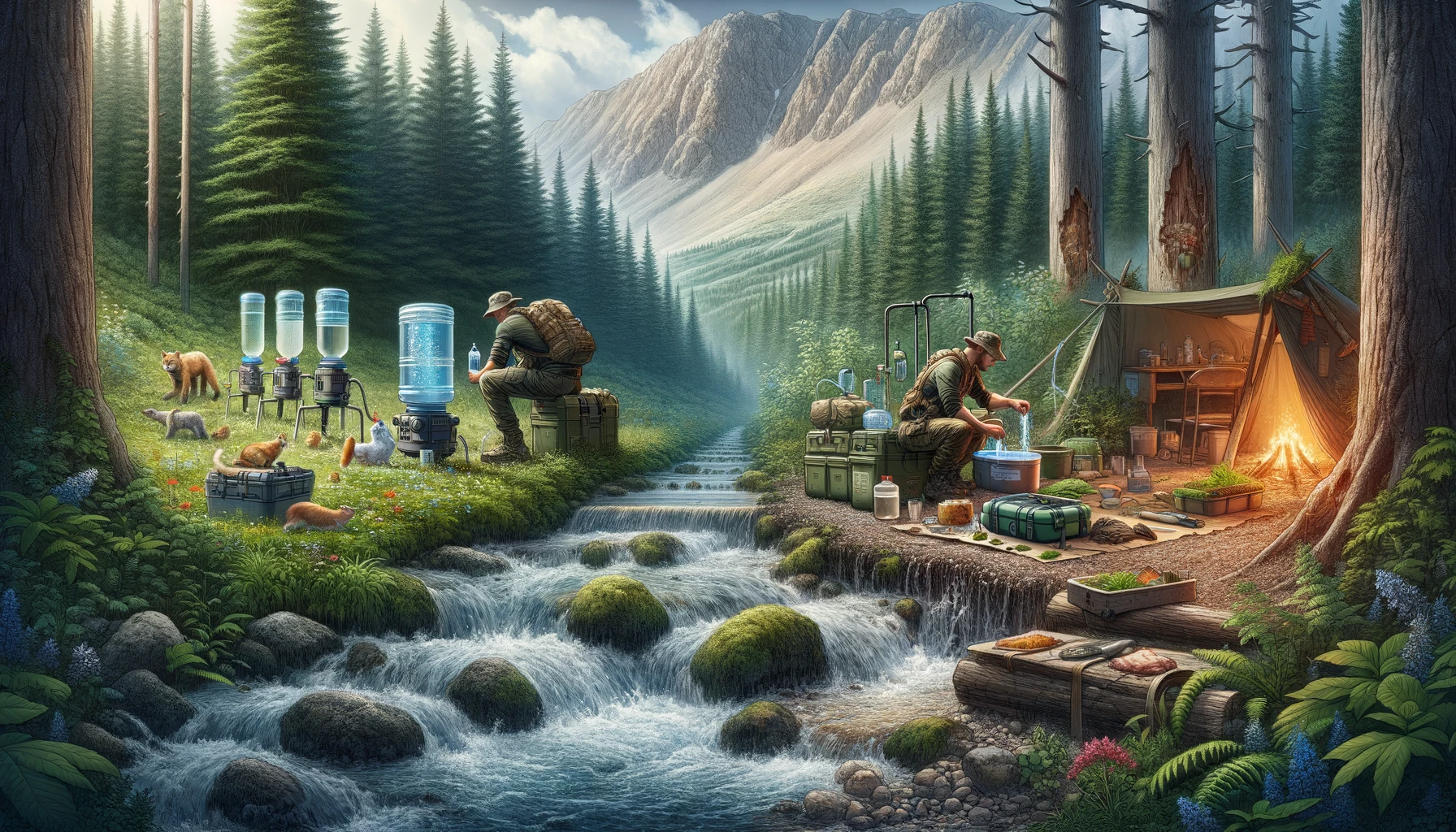
Whether you find yourself lost on a day hike or in a post-apocalyptic scenario where the government has collapsed tomorrow, knowing how to find and purify water and procure food is essential for your survival.
Finding and purifying water:
In the wilderness, water is your lifeline, and being able to locate and purify it is crucial. Here are some skills that could mean the difference between life and death:

- Identify water sources: Learn to recognize potential water sources such as rivers, streams, and lakes, as well as less visible sources like dew collection, rainwater, and underground springs.
- Purify water: Water found in the wilderness may be contaminated with harmful bacteria and parasites. Mastering methods such as boiling, using water purification tablets, or constructing a basic water filter can ensure you have safe drinking water.
- Practice water conservation: In survival situations, water is often limited. Learn to conserve it by using it sparingly for drinking and cooking only and reusing water whenever possible.
Procuring food in the wilderness:
When resources are scarce, being able to procure your own food is absolutely necessary. These skills can help you sustain yourself in the wild:
| Plant | Nutritional Value | Cautionary Notes |
|---|---|---|
| Dandelion | High in vitamins A, C, and K, iron, calcium, and potassium | Some look-alike plants, such as cat’s ear and hawksbeard, are toxic if consumed. |
| Purslane | Rich in omega-3 fatty acids, vitamins A, C, and E, magnesium, potassium, and iron | Avoid confusion with spurge, which is toxic and can cause skin irritation or digestive issues. |
| Nettles | High in vitamins A and C, iron, calcium, and protein | Stinging nettles must be cooked or dried to remove the stinging hairs. |
| Wild Garlic | Contains vitamins A and C, calcium, and iron | Similar-looking plants such as lily of the valley and autumn crocus are toxic if ingested. |
| Chickweed | Rich in vitamins A, C, and D, calcium, and magnesium | May be confused with poisonous plants like scarlet pimpernel or scarlet pimpernel. |
- Learn basic foraging: Familiarize yourself with edible plants, fruits, nuts, and mushrooms that can be found in the wilderness. Having this knowledge will enable you to supplement your diet with natural resources.
- Master basic trapping techniques: Being able to set up traps and snares to catch small game like rabbits or squirrels can provide much-needed sustenance in a survival situation.
- Develop hunting and fishing skills: Learning how to build a shelter and navigate the wilderness are vital, but knowing how to hunt or fish can significantly increase your chances of thriving. Practice with tools such as spears, slingshots, or improvised fishing gear to ensure you can provide food for yourself.
“In the wilderness, every plant, insect, and animal can be a potential meal. But knowledge is your greatest tool in distinguishing feast from famine,” comments Flora Bushcraft, the authority on wilderness foraging and survival diets.
First Aid and Emergency Preparedness in Remote Settings
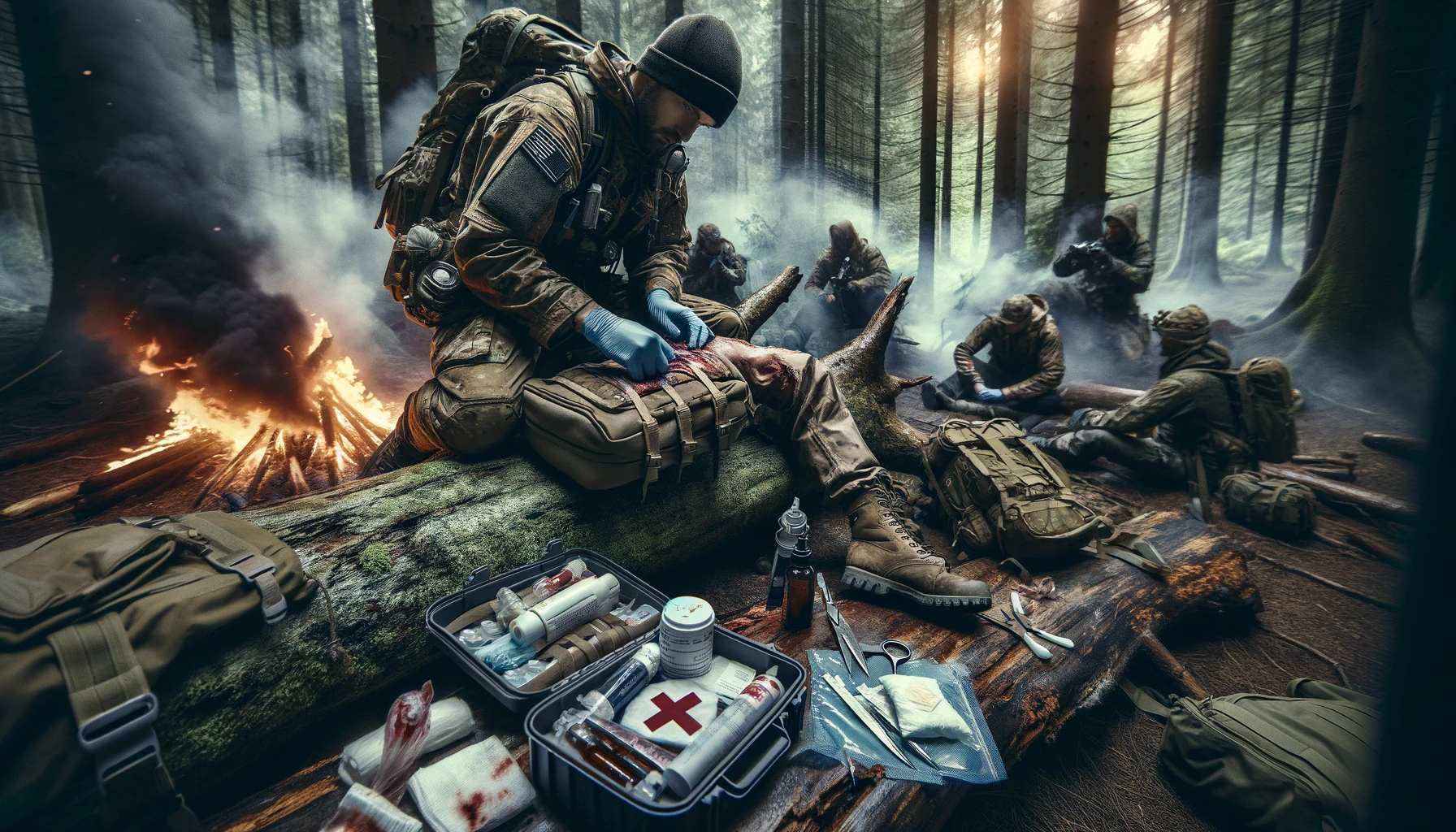
When it comes to first aid and emergency preparedness in remote settings, it’s important to separate fact from fiction.
While many survival scenarios are depicted on television as thrilling adventures where protagonists overcome extreme obstacles with ease, real-life emergency situations can be much more challenging and less predictable.
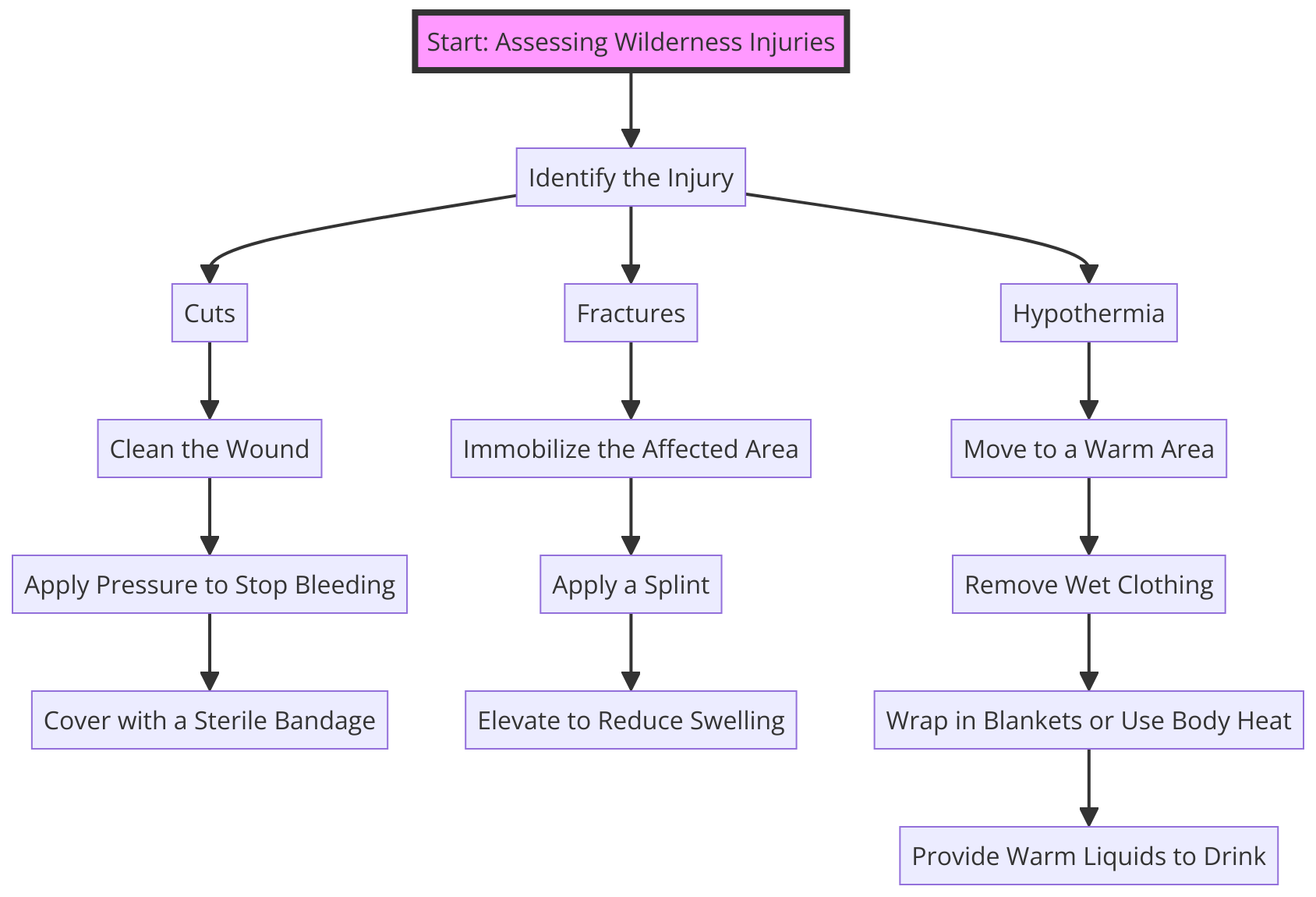
In remote settings, having a well-stocked first aid kit, along with the knowledge of how to use it, can truly be a matter of life and death.
| Use Case | Item | Recommended Quantity | Tips for Compact Packaging |
|---|---|---|---|
| Wound Care | Adhesive bandages (assorted sizes) | 20 | Store in a small, resealable plastic bag |
| Sterile gauze pads | 10 | Vacuum-seal to reduce bulk | |
| Medical tape | 1 roll | Wrap around a pencil or syringe | |
| Antiseptic wipes | 10 | Pack in a small, flat container | |
| Medications | Pain relievers (e.g., ibuprofen, acetaminophen) | 20 tablets | Use a pill organizer for easy storage |
| Antihistamines | 10 tablets | Place in a small, labeled container | |
| Anti-diarrheal medication | 10 tablets | Pack in a small, labeled container | |
| Emergency Tools | Tweezers | 1 pair | Wrap in a cloth to prevent damage |
| Scissors | 1 pair | Choose foldable scissors for compactness | |
| CPR mask | 1 | Use a small, sealable bag for storage | |
| Instant cold packs | 2 | Opt for single-use, compact packaging |
In order to increase your chances of survival until you can either find help or rescue arrives, it’s recommended to plan for a minimum of 48 hours.
Adapting to Wilderness: Developing a Survival Mindset
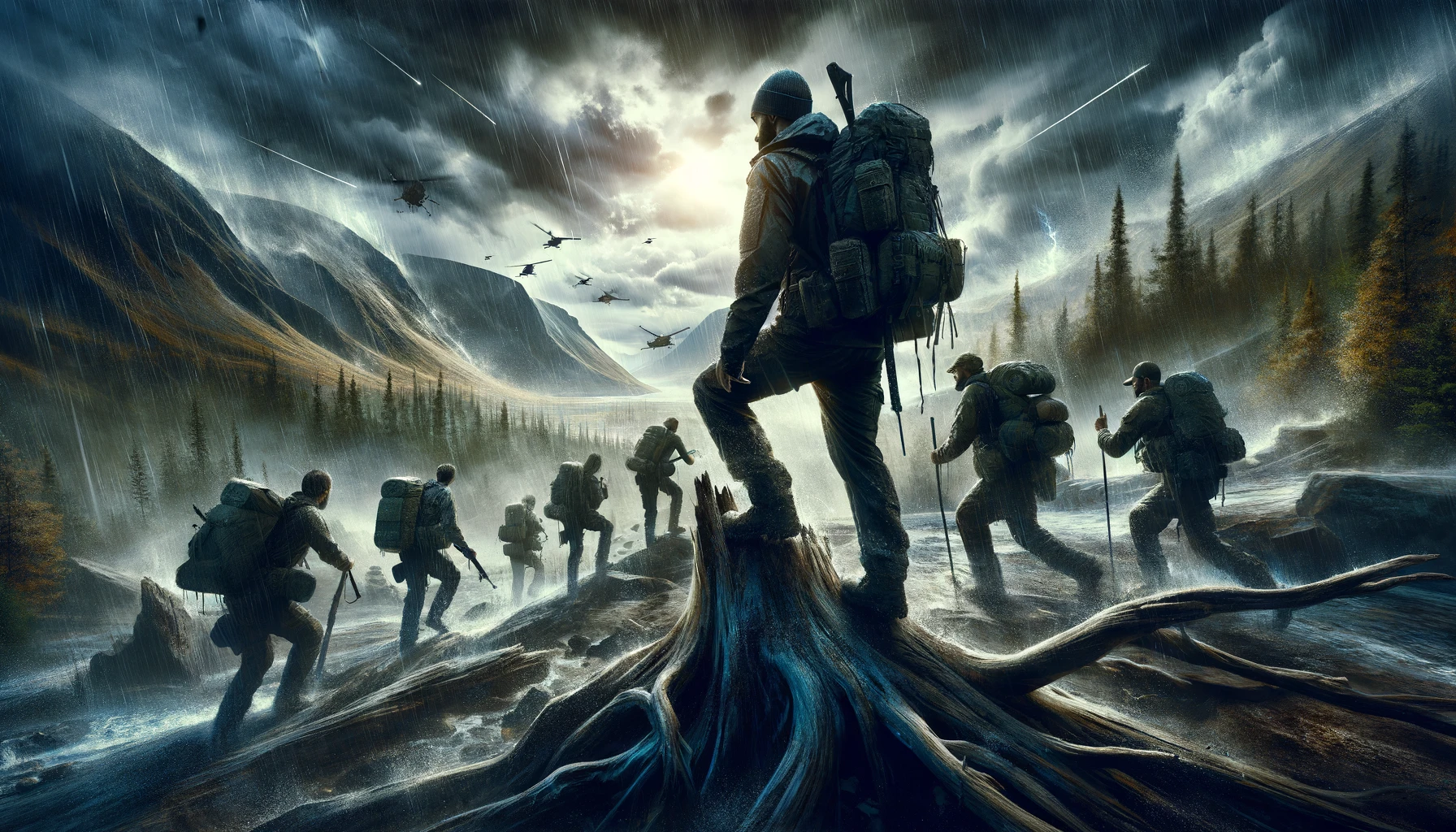
Developing a Survival Mindset
When it comes to adapting to the wilderness and developing a survival mindset, there are several key factors to consider.
To truly thrive in the wilderness, you need to be adaptable and prepared for whatever challenges may come your way.
“The wilderness tests you in ways you can’t imagine. It’s not just about surviving; it’s about discovering your true potential,”
survival philosopher known for his teachings on the mental aspects of wilderness survival
One crucial step towards developing a strong survival mindset is to take a wilderness survival course.
Not only will you learn essential skills such as shelter building and fire starting, but you’ll also gain knowledge on finding food and purifying water.
Mental Preparation: Staying Positive and Focused
When facing an emergency in the wilderness, your mental state plays a crucial role in your survival.
| Psychological Challenge | Coping Mechanisms and Techniques |
|---|---|
| Panic | 1. Deep breathing exercises to calm the nervous system |
| 2. Grounding techniques such as focusing on sensory experiences | |
| 3. Positive self-talk and affirmations to regain control and reduce anxiety | |
| Fear | 1. Visualization techniques to imagine a positive outcome and reduce fear |
| 2. Mindfulness meditation to stay present and prevent overwhelming emotions | |
| 3. Creating a plan and taking practical steps to address the source of fear | |
| Loneliness | 1. Building a routine to create structure and a sense of normalcy |
| 2. Finding ways to connect with others through journaling or writing letters | |
| 3. Engaging in activities that provide comfort and distraction, such as reading |
It’s important to stay positive and focused even in the face of adversity.
Remember that the environment and a whole host of other factors can be unpredictable, and remaining calm and level-headed is key to making sound decisions.

One way to mentally prepare yourself is by visualizing potential scenarios and planning your response.
This technique helps you think through various situations and develop strategies for each one.
FAQ:
What is wilderness prepping?
Wilderness prepping involves learning essential survival skills and preparing for emergency situations in outdoor and remote environments.
How can I start a fire in the wilderness?
You can start a fire using various methods such as using steel wool and a battery, flint and steel, or traditional fire-starting techniques.
Why is wilderness prepping important in areas prone to hurricanes?
Wilderness prepping and preparedness are crucial in hurricane-prone areas to ensure that you and your family are ready to handle the aftermath of a storm.
What should I do if my family isn’t ready for wilderness survival?
You can take the basic survival skills you’ve learned and teach your family members to prepare them for any emergency situation.
How can I develop a proper survival mindset for outdoor scenarios?
Developing a proper survival mindset involves understanding the skills needed to not only survive but also thrive in wilderness or urban environments.
What are some essential wilderness survival skills to learn?
Some essential wilderness survival skills include wilderness first aid, foraging for food with high nutritional value, and building shelters for protection.
How long should I be prepared to survive in the wilderness without assistance?
It is suggested to have enough skills and supplies to survive for at least 30 days before help or rescue arrives in a survival scenario.
Why is it important to learn bushcraft skills for wilderness prepping?
Learning bushcraft skills can help you thrive in whatever survival scenario you find yourself in, as it teaches practical and traditional outdoor skills.
More Resources:


